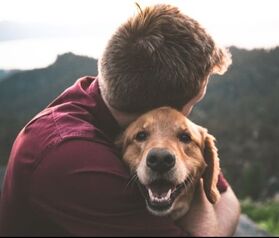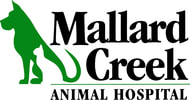Laurie Anne Walden, DVM  If you’ve been sheltering at home during the pandemic, your pets have gotten used to having you around all the time. Puppies and kittens adopted during lockdown might have never been home without people. Take these steps to prevent separation anxiety in your pets when you start spending more time away. Gradually Change the Schedule Dogs and cats feel most secure when their environment is predictable. If meal and walk times will be changing, start the new schedule in advance to give them time to adjust. You might also need to gradually alter the timing, frequency, and duration of play times (but make sure they still get plenty of exercise). Make Departures No Big Deal A standard recommendation for pets with separation anxiety is to stay calm when you leave and when you return. It’s fine to say hi when you walk in the door, but excited greetings and prolonged goodbyes can be counterproductive. You don’t want to focus too much of their attention on the fact that you are going or coming. Start With Short Departures Have everyone leave the house for a few minutes to see how your dog reacts. Some signs of separation anxiety are barking, whining, scratching at the door, urinating or defecating in the house, and chewing the door frame or other objects. A video camera (if you have one) can pick up signs like pacing, panting, and lip licking. If all goes well, gradually increase the length of time you’re gone. If your dog seems anxious, progress very slowly and use positive reinforcement like treats when you leave. Simply picking up the keys or touching the doorknob is enough to trigger anxiety in some dogs. Dogs that already have separation anxiety might need a veterinary consult. Use Toys and Treats Giving your pets toys or treats when you leave can serve 2 purposes: distraction and counterconditioning. A time-consuming toy like a food puzzle gives them something to think about other than the fact that you’re gone. Never leave your pets with toys they can swallow whole, chew apart, shred, mangle, break, or choke on, though. Counterconditioning means giving an animal a positive stimulus, like a yummy treat, at the same time as an unwanted event, like you leaving. Counterconditioning can help animals form positive associations with things they don’t like but have to put up with. Confine Pets Safely If your dogs can’t safely have the run of the house while you’re away, accustom them to a crate or an appropriate room in advance. Make the space a familiar, comfortable environment for them, using positive reinforcement as needed. Don’t Punish Destruction and house soiling aren’t signs that your dog resents you or wants your attention. These could be signs of anxiety, boredom, lack of exercise, or (with house soiling) just needing to be taken out more often. Punishing animals after the fact increases their anxiety and does nothing to keep the behavior from happening again. Look for the cause of the problem instead. Doggie Daycare? It Depends Dog daycares and kennels might or might not be open in your area. Follow your local public health precautions. Dogs and cats don’t seem able to transmit COVID-19 to humans, and the risk of them becoming infected appears to be low. To be safe, however, the American Veterinary Medical Association recommends limiting contact between pets and people who are not part of the household. If any people or animals in your home are sick, don’t send your dog to daycare. And don’t put face coverings over pets’ noses or wipe them down with household disinfectants. For More Information COVID-19: 7 steps to help your pet prepare for your return to work. American Veterinary Medical Association. Published June 12, 2020. Accessed July 3, 2020. https://www.avma.org/news/press-releases/covid-19-7-steps-help-your-pet-prepare-your-return-work McConnell P. Preventing separation anxiety in the time of COVID. The Other End of the Leash. Published April 27, 2020. Accessed July 3, 2020. https://www.patriciamcconnell.com/theotherendoftheleash/preventing-separation-anxiety-in-the-time-of-covid Photo by Eric Ward Comments are closed.
|
AuthorLaurie Anne Walden, DVM Categories
All
Archives
June 2024
The contents of this blog are for information only and should not substitute for advice from a veterinarian who has examined the animal. All blog content is copyrighted by Mallard Creek Animal Hospital and may not be copied, reproduced, transmitted, or distributed without permission.
|
- Home
- About
- Our Services
- Our Team
-
Client Education Center
- AKC: Spaying and Neutering your Puppy
- Animal Poison Control
- ASPCA Poisonous Plants
- AVMA: Spaying and Neutering your pet
- Biting Puppies
- Boarding Your Dog
- Caring for the Senior Cat
- Cats and Claws
- FDA warning - Bone treats
- Force Free Alliance of Charlotte Trainers
- Getting your Cat to the Vet - AAFP
- Holiday Hazards
- How To Feed Cats for Good Health
- How to Get the Most Out of your Annual Exam
- Indoor Cat Initiative - OSU
- Introducing Your Dog to Your Baby
- Moving Your Cat to a New Home
- Muzzle Training
- Osteoarthritis Checklist for Cats
- What To Do When You Find a Stray
- Our Online Store
- Dr. Walden's Blog
- Client Center
- Contact
- Cat Enrichment Month 2024
|
Office Hours
Monday through Friday 7:30 am to 6:00 pm
|
Mallard Creek Animal Hospital
2110 Ben Craig Dr. Suite 100
|
Site powered by Weebly. Managed by IDEXX Laboratories

 RSS Feed
RSS Feed